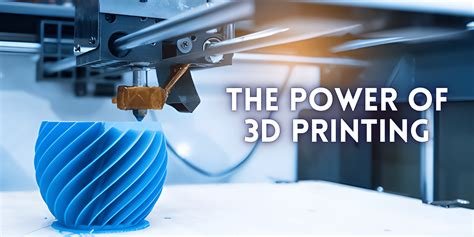This blog post titled Exploring the Revolutionary Impact of 3D Printing in Manufacturing delves into the transformative role of 3D printing technology within the manufacturing sector. Beginning with an introduction to its evolution, the article discusses how 3D printing is disrupting traditional manufacturing processes by enabling faster production and customization. It highlights the benefits in product design, showcasing the technology’s potential to streamline supply chain management and reduce costs. The post presents several case studies demonstrating successful applications of 3D printing in manufacturing while also addressing the challenges and limitations faced by businesses adopting this technology. Finally, it outlines future trends in 3D printing, stressing its lasting impact on various industries and encouraging companies to embrace this innovative manufacturing approach.
Introduction to 3D Printing Technology and Its Evolution
The rapid evolution of 3D printing technology has transformed the landscape of manufacturing, bringing innovation and efficiency to various sectors. This revolutionary process, where physical objects are created layer by layer from digital models, has unlocked new possibilities for production. Today, exploring the intricacies of 3D printing requires a deep understanding of its history, significance, and the milestones that have defined its growth.
From its inception in the 1980s to its widespread adoption in modern industries, 3D printing has continuously improved, driven by advances in technology and materials. As manufacturers and designers embrace this technology, they recognize its potential to reduce waste, customize products, and streamline workflows. The journey of 3D printing showcases a remarkable intersection of creativity and engineering that continually reshapes traditional manufacturing paradigms.
- Key Milestones in 3D Printing Evolution
- 1981: First 3D Printing Prototype Created by Hideo Kodama
- 1984: Charles Hull invents stereolithography (SLA)
- 1992: Introduction of Selective Laser Sintering (SLS) technology
- 2005: Launch of open-source 3D printing movement
- 2013: Breakthroughs in bioprinting for tissue engineering
- 2019: Adoption of 3D printing across various industries including aerospace and healthcare
- 2021: Advancements in metal 3D printing, highlighting production capabilities
Each milestone contributes not only to the technological advancements but also to the increased accessibility and application of 3D printing techniques across diverse fields. The benefit of customizing designs, reducing production times, and enabling on-demand manufacturing represents a paradigm shift in how industries approach product development. As more sectors integrate this technology, the full spectrum of its impact becomes increasingly apparent.
“3D printing is not just a technology; it’s a new way of thinking about how we design and produce products.”
Understanding the trajectory of 3D printing is crucial for businesses looking to harness its full potential. The ongoing advancements promise to break barriers between traditional manufacturing and innovative practices. Therefore, the exploration of 3D printing in various applications will offer insights that challenge conventional methods and inspire future innovations, setting the stage for a new era in manufacturing.
Why 3D Printing Is Disrupting Traditional Manufacturing
Exploring the fundamental changes that 3D printing brings to the manufacturing landscape reveals its disruptive potential. Unlike traditional manufacturing methods, which often rely on subtractive processes, 3D printing utilizes additive techniques to create final products. This shift not only allows for greater design complexity but also minimizes waste, making it an environmentally viable option. As companies adapt to this innovative technology, their manufacturing processes are transforming rapidly, leading to increased efficiency and customization.
The impact of 3D printing on traditional manufacturing is profound. With its ability to produce parts directly from digital models, businesses can significantly reduce their lead times. This means products can be brought to market more swiftly, allowing companies to respond to consumer demands and market trends with agility. Additionally, this approach facilitates rapid prototyping, enabling manufacturers to test and iterate on designs before full-scale production.
Benefits of 3D Printing in Manufacturing:
- Reduced material waste by layering instead of cutting away materials.
- Lower production costs, particularly for small batch runs.
- Increased design freedom, allowing for intricate shapes and structures.
- Faster prototype creation, expediting the product development process.
- Customization potential for personalized products at scale.
- Improved supply chain efficiency by reducing inventory needs.
- Local production capabilities that minimize shipping and logistics costs.
As businesses continue exploring the potential of 3D printing, it’s important to recognize the competitive edge it provides. By utilizing this technology, manufacturers can foster innovation and stay ahead in an increasingly dynamic market. Moreover, the ability to customize products on a mass scale and streamline operations means that 3D printing is not merely a trend; it is indeed reshaping the future of manufacturing as we know it.
Exploring the Benefits of 3D Printing in Product Design
In the world of product design, the advent of 3D printing technology has fundamentally transformed how designers and manufacturers approach the creation process. Exploring the full potential of this technology unveils numerous benefits that drive efficiency and innovation. Designers can now visualize and iterate their ideas more effectively, resulting in products that are not only functional but also highly tailored to end-user needs. Furthermore, 3D printing fosters a creative environment where experimentation is encouraged, leading to breakthrough designs that push the boundaries of traditional manufacturing.
One of the most significant advantages of 3D printing lies in its ability to support user-centric design. Unlike conventional production techniques, which often isolate the designer from the end user, 3D printing allows for designs to be modified quickly based on user feedback. This immediate feedback loop ensures that the final product aligns closely with customer expectations and requirements. Ultimately, this results in increased customer satisfaction and loyalty, as products are developed with a focus on usability and functionality.
User-Centric Design
The focus on users transforms the design landscape when utilizing 3D printing technology. With tools such as CAD software and advanced 3D modeling, designers can create prototypes and modify them under real-time conditions, incorporating user input at every stage. This responsive approach not only enhances product quality but also accelerates the product development timeline. As an added benefit, 3D printing reduces waste by only using the necessary materials during the production phase, safeguarding the environment while optimizing resources for production.
Rapid Prototyping Advantages
Another crucial benefit of 3D printing is its inherent capability for rapid prototyping. Traditional manufacturing methods often require extensive lead times and capital investment for tooling and molds. In stark contrast, 3D printing allows designers to fabricate prototypes in a fraction of the time and at a reduced cost. This agility in the prototyping phase enables businesses to launch products to market more quickly, giving them a competitive edge. Along with acceleration, 3D printing provides the flexibility to create intricate designs that would be impossible or prohibitively expensive to achieve with conventional methods.
To effectively integrate 3D printing into product design, consider the following Steps to Integrate 3D Printing in Design:
- Identify project objectives and potential applications of 3D printing.
- Invest in the appropriate 3D printing technology and materials.
- Train your design team on CAD tools and 3D design principles.
- Create an initial prototype based on user feedback.
- Iterate designs rapidly utilizing 3D printing capabilities.
- Test prototypes rigorously with end users for real-world insights.
- Finalize the design for production, continuously seeking improvements.
By embracing 3D printing, companies can not only improve their design methodologies but also significantly reduce time-to-market while fostering innovation.
The Role of 3D Printing in Supply Chain Management
The integration of 3D printing into supply chain management is revolutionizing how manufacturers approach production and logistics. By exploring the capabilities of this innovative technology, companies can streamline processes, reduce costs, and improve efficiency. One of the fundamental shifts brought about by 3D printing is the transition from traditional inventory systems to on-demand production, which enhances flexibility and responsiveness to market demands.
Moreover, 3D printing allows for an unprecedented level of customization, catering to specific customer needs without the burden of extensive inventory. This capability facilitates faster time-to-market for new products, as prototypes can be produced rapidly and tested in real-world scenarios. Additionally, as organizations seek to minimize waste in their operations, 3D printing enables the use of only the necessary materials for a product, thus supporting sustainable supply chain practices.
- Key Advantages of 3D Printing in Supply Chains
- Reduced lead times for product development
- Minimized inventory costs through on-demand manufacturing
- Enhanced customization options for better customer satisfaction
- Lower material waste and more sustainable production
- Streamlined logistics through local manufacturing capabilities
- Faster prototyping and testing phases
- Improved collaboration between design and production teams
Furthermore, 3D printing can lead to significant cost savings by cutting down on transportation expenses. As companies produce goods closer to the point of consumption, they reduce the reliance on long-distance shipping and the associated carbon footprint. As businesses continue to adapt to these changes, exploring the role of 3D printing in supply chain management becomes increasingly critical for maintaining a competitive edge in the global market.
Case Studies: 3D Printing Success Stories in Manufacturing
In the realm of manufacturing, the impact of 3D printing has been nothing short of transformative. Exploring the ability of this technology to enhance efficiency, reduce costs, and improve product quality reveals several noteworthy success stories. These case studies not only highlight the versatility of 3D printing but also illustrate how different industries are embracing this innovative approach to create unprecedented solutions.
Top 3D Printing Case Studies
- General Electric (GE) – Engineering complex jet engine parts
- Ford – Rapid prototyping of automotive components
- Materialise – 3D printed surgical guides for healthcare
- Boeing – Lightweight parts for aerospace applications
- Adidas – Customized shoe production
These examples demonstrate a broad spectrum of how 3D printing is being successfully implemented across varying sectors. As industries adopt this technology, the outcomes often lead to not just improvements but also entirely new possibilities in design and functionality.
Automotive Industry
The automotive sector is one of the most significant beneficiaries of 3D printing technology. By leveraging this innovation, manufacturers can produce complex geometries that were previously unattainable with traditional methods. For instance, Ford has made breakthroughs in rapid prototyping, allowing them to create automotive components with greater speed and accuracy. This capability not only shortens the product development cycle but also reduces waste and lowers production costs significantly.
Medical Applications
In the medical field, 3D printing is revolutionizing patient care. The ability to create personalized medical devices tailored to individual patients drastically improves the outcome of treatments. Companies like Materialise are pioneering the use of 3D printed surgical guides that enhance precision during complex surgeries. This advancement exemplifies exploring the potential of 3D printing to improve the overall effectiveness of medical interventions.
Aerospace Innovations
The aerospace industry is recognizing the advantages of lightweight components that 3D printing can provide. Boeing, for instance, is utilizing this technology to manufacture lightweight parts, significantly improving fuel efficiency and reducing environmental impact. The agility that 3D printing offers in producing parts on demand also leads to considerable savings in inventory and lead times.
Challenges and Limitations of 3D Printing Technology
While exploring the potential of 3D printing technology in manufacturing, it is essential to recognize its challenges and limitations. Despite its innovative capabilities, the technology poses several hurdles that industries must navigate. Issues such as material restrictions, production speed, and surface finish quality prevent 3D printing from being a one-size-fits-all solution. It brings a myriad of advantages while still facing numerous constraints that can hinder its widespread adoption.
The complexity of the 3D printing process can result in uneven quality and inconsistency in finished products. Additionally, scaling production to meet larger demands often presents significant difficulties. Many businesses find that while small batches can be produced efficiently, the transition to mass production requires substantial investment in improving technology or adopting hybrid manufacturing techniques. The financial implications here need to be thoroughly evaluated before full-scale implementation.
- Common Drawbacks of 3D Printing
- Limited materials: Not all materials are suitable for 3D printing, restricting application.
- Slow production speed: Compared to traditional methods, 3D printing can be time-consuming.
- Surface finish issues: The quality of surface finishes may require post-processing.
- Size limitations: Many printers have size constraints that can hinder design possibilities.
- High initial costs: Equipment and setup expenses can be a barrier to entry.
- Technical skill requirement: Skilled personnel are needed for effective operation and maintenance.
Moreover, the >intellectual property concerns poses significant issues for companies adopting 3D printing. As designs can be easily replicated, the risk of infringement increases, prompting businesses to rethink how they protect their proprietary information. Furthermore, regulatory compliance related to safety and quality standards in various industries presents yet another challenge for 3D printing applications. Understanding these factors is crucial for businesses looking to leverage this transformative technology while mitigating risks and ensuring sustainable growth.
Future Trends in 3D Printing for Manufacturing
Exploring the future of 3D printing reveals a landscape ripe with innovation and transformative possibilities within the manufacturing sector. As technology advances, the integration of 3D printing into various manufacturing processes becomes more refined, promising significant enhancements in efficiency, design, and cost-effectiveness. Companies are increasingly adopting this revolutionary technology to stay competitive and meet the ever-evolving demands of the market.
One of the most notable trends is the advancement in materials used for 3D printing. As manufacturers continue to experiment with and develop new composite materials, the potential applications for 3D printing will expand dramatically. For instance, bio-based and eco-friendly filaments are becoming more prevalent, allowing manufacturers to reduce their environmental impact while still producing high-quality products. The continuous evolution of these materials demonstrates a strong commitment to sustainability and innovation in manufacturing practices.
Emerging Trends in 3D Printing
- Increased adoption of artificial intelligence and machine learning to optimize printing processes.
- Development of advanced materials for greater strength and flexibility.
- Integration of IoT technology for real-time monitoring and quality assurance.
- Personalization of products at scale, catering to individual customer preferences.
- Expansion of hybrid manufacturing techniques combining traditional methods with 3D printing.
- Enhanced regulations and standards for safety and quality in 3D printing applications.
As industries recognize the advantages of using 3D printing, there is also a growing emphasis on customization and on-demand production. This shift enables manufacturers to produce components tailored to specific needs without maintaining large inventories. By reducing lead times and minimizing waste, businesses can operate more efficiently and respond faster to changes in consumer preferences.
Furthermore, collaborations between tech companies and manufacturers are likely to foster innovation in 3D printing technology. These partnerships can lead to breakthroughs in printing speed, accuracy, and scalability. As the industry evolves, we can expect to see greater standardization in processes, making it easier for companies to integrate 3D printing into their existing manufacturing frameworks. This collaboration is vital to harnessing the full potential of 3D printing and ultimately transforming the manufacturing landscape.
Conclusion: The Lasting Impact of 3D Printing on Industries
In summary, the journey of Exploring the impact of 3D printing on various industries reveals a profound transformation. The technology has not only streamlined production processes but has also redefined what is possible in terms of design and customization. As industries adapt to this innovative manufacturing paradigm, they find new avenues for efficiency and sustainability. This evolution marks a significant departure from traditional methods, enabling businesses to respond flexibly to market demands.
Furthermore, 3D printing exemplifies a shift towards a more decentralized manufacturing approach. With on-demand production capabilities, companies can reduce inventory costs and waste while enhancing product quality. The personalization offered by 3D printing fosters a customer-centric experience, allowing businesses to cater to individual preferences. As a result, firms are finding that embracing this technology can lead to substantial competitive advantages.
Key Takeaways from 3D Printing
- Enhanced design freedom and complexity in manufacturing.
- Reduction in material waste and inventory costs.
- Ability to rapidly prototype and iterate designs.
- Customization capabilities tailored to customer specifications.
- Potential for local production, decreasing transportation costs.
- Integration with digital technologies for smarter manufacturing.
- Continuous improvement in materials and technologies driving progress forward.
Finally, the lasting impact of 3D printing is not merely about adopting new machinery; it’s about fundamentally rethinking how products are designed, manufactured, and delivered. Organizations that strategically leverage 3D printing technologies are poised to lead the charge in innovation. As we move towards an increasingly competitive global market, the role of 3D printing will undoubtedly expand, positioning it as a key player in the future of manufacturing across diverse sectors.
Next Steps for Businesses Embracing 3D Printing
As businesses begin to realize the potential of 3D printing in revolutionizing manufacturing, it becomes crucial to understand the next steps they should take for successful implementation. Exploring the possibilities of this innovative technology requires a strategic approach that encompasses evaluation, investment, and ongoing development. Companies must assess their current capabilities and strategically align their goals with the advancements in 3D printing technologies.
Organizations should first focus on identifying specific areas where 3D printing can add significant value. This identification may involve evaluating existing processes that could benefit from increased flexibility and customization. The goal is to innovate while minimizing disruption to existing workflows. Aligning the operational strategy with the capabilities offered by 3D printing can lead to enhanced productivity and reduced lead times.
Actionable Steps for Adoption
- Conduct a thorough assessment of your current manufacturing processes.
- Identify potential applications where 3D printing could add value.
- Invest in the appropriate 3D printing technology and equipment.
- Train your workforce on 3D printing methods and maintenance.
- Establish partnerships with 3D printing service providers for support.
- Implement pilot projects to test 3D printing in a controlled environment.
- Continuously monitor and evaluate the outcomes to refine processes.
Another critical step for businesses is to foster a culture of innovation that embraces new technologies like 3D printing. This means encouraging employees to experiment with new designs and processes, which ultimately leads to continuous improvement. Organizations that foster a culture of learning are better positioned to leverage the advantages of 3D printing and stay ahead in a rapidly evolving market.
By embracing 3D printing, businesses can enhance product development cycles, respond swiftly to market demands, and create highly customized solutions.
Lastly, forming alliances with other industry players and participating in 3D printing communities can provide valuable insights and shared experiences. Networking through workshops, seminars, and online platforms focused on exploring the latest advancements in 3D printing can foster collaboration and innovation that drive competitive advantages. As companies navigate this transformative landscape, the focus should not only be on technology adoption but also on building the right ecosystem to support collective growth.









